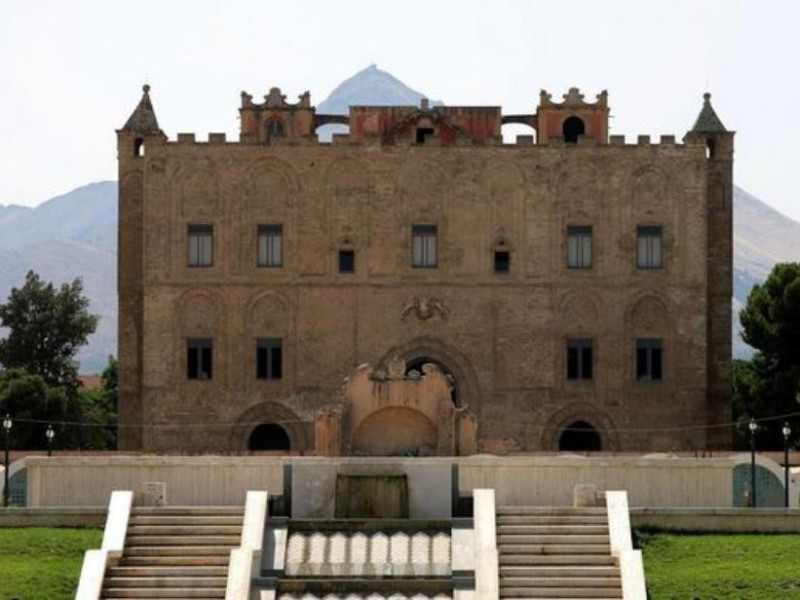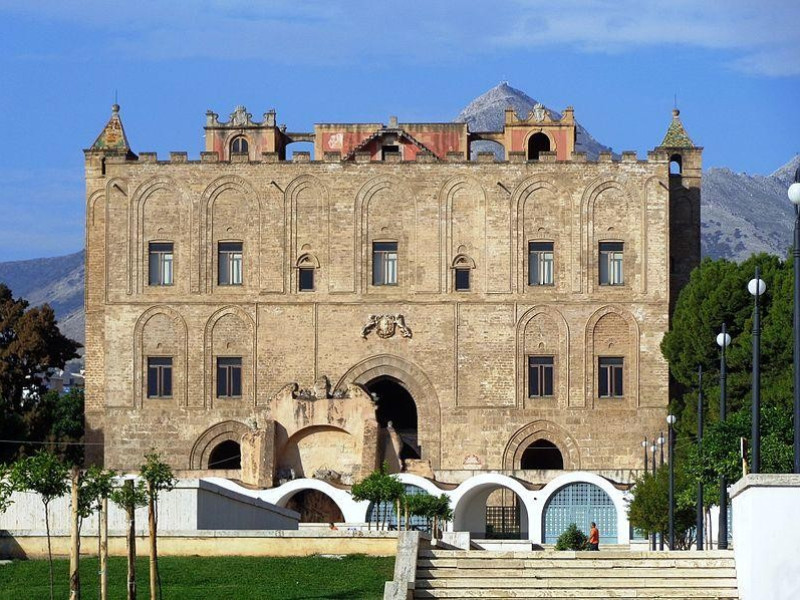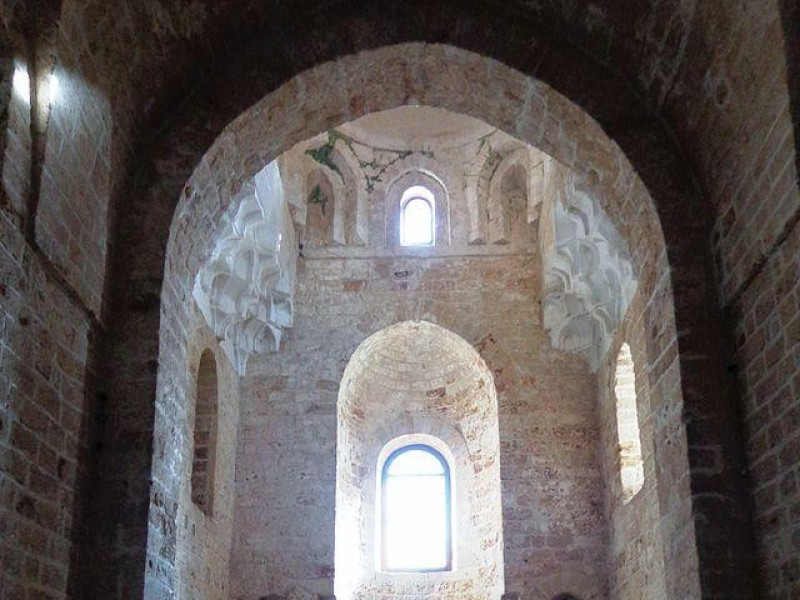Castello e Giardino della Zisa
The Zisa Castle (from the Arabic, al-'Azīza, "the beautiful") stood outside the walls of the city of Palermo, inside the Royal Norman Park that stretched between pavilions, gardens and water basins from Altofonte to the walls of the royal palace. The earliest records indicate the construction of the Castle dates back to 1165, under the reign of William I. Another inscription in Kufic script, of the late Middle Ages, the most famous, it is still preserved in the attic wall. Until the seventeenth century the palatium was not substantially modified, the restoration occurred in the years 1635-36, when Giovanni de Sandoval and Platamone of Alcantara, bought the Zisa, adapting it to the new housing needs: was added another floor and a grand staircase. In 1806, the Zisa passed to the Notarbartolo Principles, that carrying out various works of consolidation. In 1955 the Castle was expropriated by the State, and after fifteen years of neglect, in 1971 the right wing collapsed. The project for the reconstruction and structural restoration was entrusted to Prof. Giuseppe Caronia. The symmetry is absolute: horizontally distributed in three rows, has a long interior hallway on the ground floor, on which there are the great Fauntain's Hall and a number of service areas. The Fauntain's Hall, the most distinctive architectural element, has a square base surmounted by a cross vault arched, with three large niches occupied by half-domes decorated with muqarnas (honeycomb decoration). In the niche of the entrance is a fountain surmounted by a mosaic panel on a gold background, beneath which flows the water, channeled to the center, runs through the floor of the room up to the fish pond in front. The Garden, a rectangular plant, is divided by a canal that connects a system of water tanks. The canal and pedestrian paths are white marble quarries from Alcamo and Castellammare del Golfo, and decorative ceramics come from Santo Stefano di Camastra. Twelve footpaths are planted with plants typical of the Mediterranean. Currently, the Zisa houses the Museum of Islamic Art.
Info:
From Tuesday to Saturday from 09:00 am to 6:30 pm; Monday, Sunday and holidays from 9:00 am to 1:30 pm.






